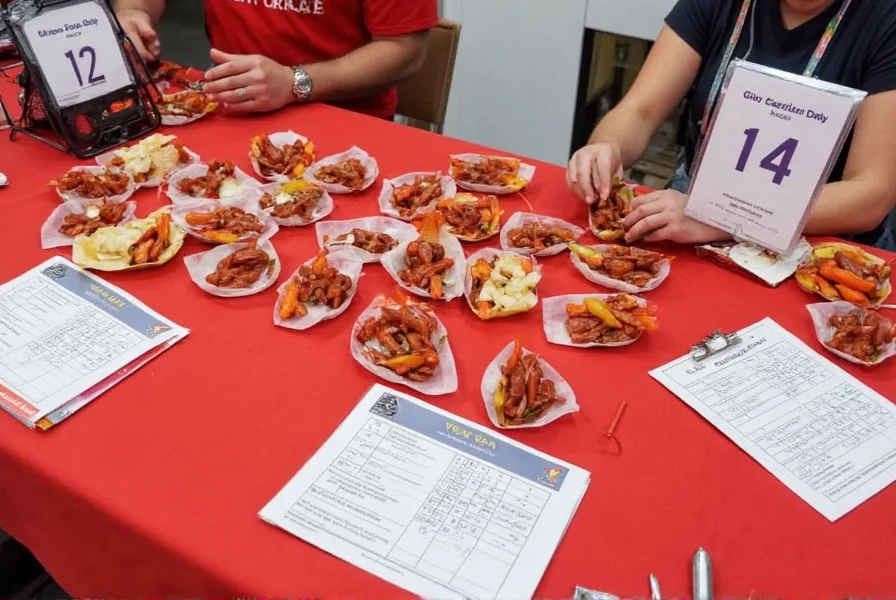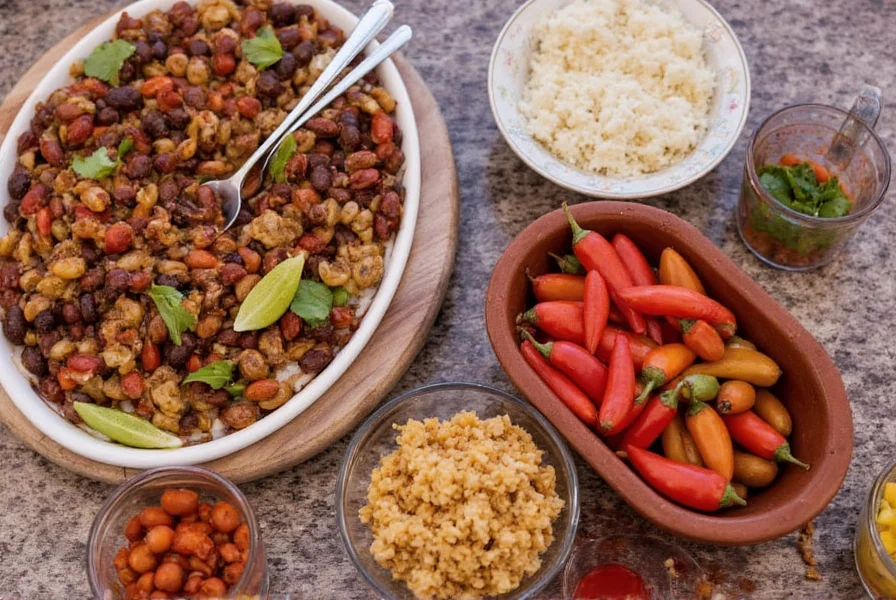A chili cook off is a competitive cooking event where participants prepare and serve their signature chili recipes to be judged based on specific criteria including taste, aroma, texture, and appearance. These events range from casual backyard gatherings to professionally sanctioned competitions with strict rules, often featuring categories for different chili styles like red chili, verde, orincinnati-style. Most competitions use blind judging with standardized scoring systems to determine winners.
Chili cook offs have evolved from humble community gatherings into organized competitions that celebrate culinary creativity and regional food traditions. Whether you're a first-time competitor or seasoned chili master, understanding the fundamentals of these events can enhance your experience and improve your chances of success.
History and Evolution of Chili Cook Offs
The modern chili cook off traces its roots to the 1967 Terlingua International Chili Championship in Texas, which established competitive chili cooking as a legitimate sport. What began as a small gathering of chili enthusiasts has grown into a nationwide phenomenon with thousands of events annually. The International Chili Society (ICS), founded in 1990, now sanctions over 150 competitions each year, establishing standardized rules that maintain consistency across events while preserving regional variations.
Types of Chili Cook Off Competitions
Chili competitions fall into several distinct categories, each with specific requirements:
| Competition Type | Key Characteristics | Typical Rules |
|---|---|---|
| Sanctioned ICS Events | Officially recognized competitions with certified judges | Strict ingredient rules, mandatory meat content, no beans in traditional red chili |
| Amateur Community Events | Local gatherings often for charity or community building | More flexible rules, often allow beans, focus on fun over strict standards |
| Specialty Category Competitions | Focus on specific chili styles (verde, white, Cincinnati) | Category-specific requirements, may allow additional ingredients |
Essential Rules and Regulations
Understanding competition rules is critical for anyone planning to enter a chili cook off. While specific requirements vary by event, most sanctioned competitions follow these fundamental guidelines:
- Ingredient restrictions: Traditional red chili must contain meat (usually beef), chili peppers, and spices. Beans and pasta are typically prohibited in official red chili categories.
- Preparation requirements: Most competitions require cooking on-site during the event, though some allow pre-cooked base ingredients.
- Serving specifications: Competitors must provide a consistent sample size (usually 4-6 ounces) served at proper temperature.
- Blind judging: Entries are numbered and presented without identifiers to ensure impartial evaluation.
Before committing to a competition, always review the specific chili cook off rules and regulations for that event. Many organizers publish detailed rulebooks online well in advance of the competition date.
Chili Cook Off Judging Criteria Explained
Professional judging follows a standardized scoring system that evaluates multiple dimensions of each entry. Understanding these criteria gives competitors a significant advantage when preparing their recipes for competition.
Taste (40% of score)
Judges evaluate the overall flavor balance, including heat level, meatiness, and complexity of spices. The best competition chili delivers a harmonious blend where no single element overpowers the others. Successful competitors often develop recipes with "layers" of flavor that reveal themselves as the judge tastes.
Aroma (20% of score)
The scent of chili creates the first impression. Judges look for an inviting, complex aroma that hints at the flavors to come without overwhelming notes of individual ingredients. Proper toasting of spices before incorporation can significantly enhance a chili's aromatic profile.
Texture and Appearance (20% each)
Texture should be hearty but not overly thick or thin, with meat properly integrated. Appearance matters more than many competitors realize—judges expect a rich, deep red color (for traditional chili) with visible meat chunks but no separation of ingredients.
When researching chili cook off judging criteria, remember that consistency across multiple samples is crucial. Your chili must taste identical in every serving you provide to judges.
Practical Tips for First-Time Competitors
Entering your first chili cook off can feel intimidating, but these practical strategies will help you compete effectively:
Preparation Essentials
- Practice your recipe at least 5-7 times before competition day to ensure consistency
- Bring backup equipment including extra fuel, utensils, and serving containers
- Prepare for weather conditions—wind, rain, or extreme heat can affect cooking
- Arrive early to secure optimal cooking space and set up properly
Recipe Development Strategies
Many winning chili cook off recipes share common elements that home cooks can adapt. Start with high-quality meat (chuck roast works well), use a blend of dried and fresh chili peppers for complexity, and consider adding umami boosters like tomato paste or coffee. The secret isn't necessarily exotic ingredients but perfect execution of fundamentals.

Finding and Entering Competitions
Locating local chili cook off events near me has become easier with dedicated resources. The International Chili Society maintains a comprehensive calendar of sanctioned events. Regional organizations like the Chili Appreciation Society International (CASI) and state-level chili associations also host competitions throughout the year.
When searching for events, consider these factors:
- Competition size (smaller events may be more welcoming for beginners)
- Entry fees and associated costs
- Travel requirements and accommodation options
- Special categories that might match your strengths
Many first-time competitors start with community events before progressing to regional and national competitions. Don't be discouraged if you don't win immediately—most successful chili cooks spent years refining their recipes through trial and error.
Organizing Your Own Chili Cook Off
Hosting a successful chili cook off requires careful planning. Whether you're organizing a charity fundraiser or community event, follow these essential steps:
- Establish clear rules and categories that match your event's scale
- Secure appropriate venue with adequate space, power, and facilities
- Recruit certified judges or establish a fair judging system for amateur events
- Plan for participant needs including cooking space, water access, and waste disposal
- Develop a timeline that accommodates cooking, judging, and awards
For smaller events, consider implementing a "people's choice" award alongside judged categories to increase audience engagement. Always prioritize food safety—ensure proper temperature control and provide hand-washing stations for all participants.
Frequently Asked Questions
What are the basic rules for a traditional chili cook off?
Traditional sanctioned chili cook offs require chili to contain meat (usually beef), chili peppers, and spices. Beans, pasta, and vegetables are typically prohibited in official red chili categories. Most competitions require on-site cooking, blind judging, and standardized serving sizes of 4-6 ounces per sample.
How can I find chili cook off events near me?
Check the International Chili Society's event calendar for sanctioned competitions. Local community centers, parks departments, and chambers of commerce often host smaller events. Social media groups dedicated to chili cooking and regional food festivals are also good resources for finding "chili cook off events near me" in your area.
What makes competition chili different from regular chili?
Competition chili focuses on balance and consistency rather than extreme heat or unique ingredients. Winning recipes typically feature layered flavors where no single element dominates, with careful attention to texture and appearance. Unlike home cooking, competition chili must taste identical across multiple servings and withstand the stress of transportation and serving at events.
Do I need special equipment to enter a chili cook off?
Basic equipment includes a reliable cooking vessel (Dutch oven or stock pot), heat source (propane burner recommended), serving containers, ladles, and保温 containers to maintain proper temperature. Many first-time competitors use camping-style cooking gear. Check specific event requirements, as some competitions have restrictions on equipment size or type.











 浙公网安备
33010002000092号
浙公网安备
33010002000092号 浙B2-20120091-4
浙B2-20120091-4